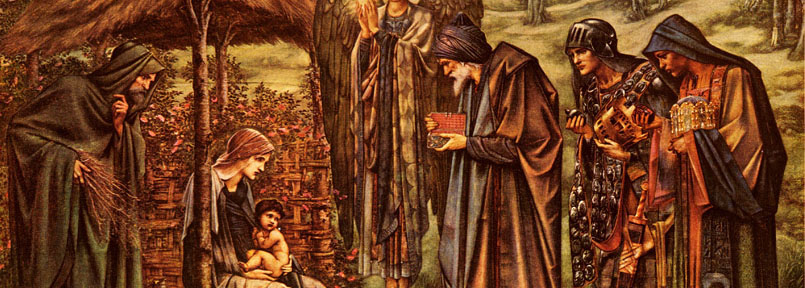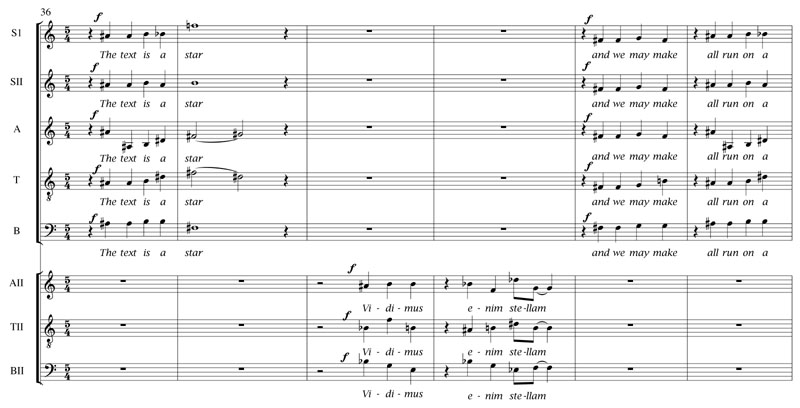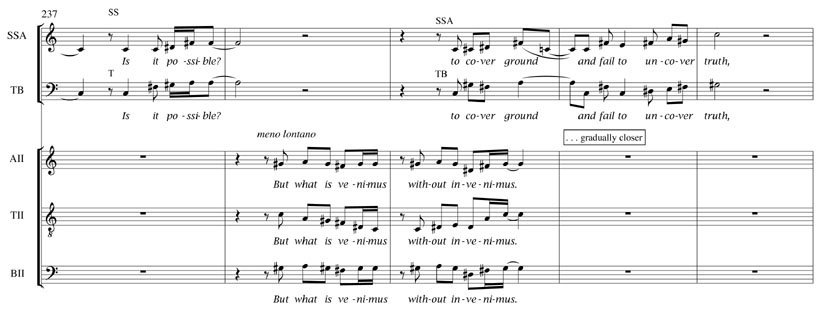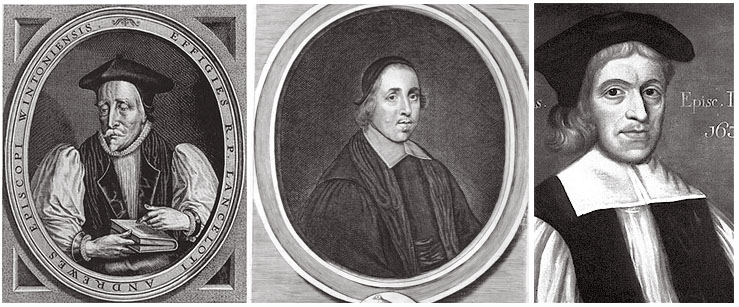
Detail from Edward Burne-Jones’ The Adoration of the Magi.
– a concert-length triptych for church performance scored for soloists, chorus and chamber organ. The Text is a Star is written in memory of Edward Said (1935 – 2004) – ‘A Wise Man from the East’.
![]() Soloists (The Magi): Male Alto, Tenor, Basss
Soloists (The Magi): Male Alto, Tenor, Basss
![]() Choir (The Chorus): SSATB
Choir (The Chorus): SSATB
![]() Chamber Organ
Chamber Organ
![]() (version available for string quartet & wind quartet)
(version available for string quartet & wind quartet)
Words by Margaret Morgan after a sermon preached before King James on Christmas Day 1622 by Bishop Lancelot Andrewes (transcribed by Dr. Marianne Dorman)
Their errand we may best learn
from themselves out of their
dicentes, which, in a word,
is to worship Him; their errand
our errand, the errand of this day.
The text is a star, and we
may make all run on a star
so that the text and the day
may be suitable, and Heaven
and earth hold a correspondence.
For now we have got us a star
on earth for that in Heaven.
Kings
We have taken to heart the star.
Its five beams manifest themselves.
One casts itself from our mouths.
One picks out the glow of faith.
One lights our obstinate feet
and the steps of our painful coming.
One fuels our minds to enquire
Ubi? Ubi est? One chafes
each soul to a warm worship.

Stefano di Giovanni, The Journey of the Magi (1435)
This is an extract from the words to The Text is a Star, by Margaret Morgan after a sermon preached before King James on Christmas Day 1622 by Bishop Lancelot Andrewes (transcribed by Dr.Marianne Dorman). Download the full text [pdf]

Extract from Part 1 – The Star.


Extract from Part 3 – Our Journey.
in two separate but simultaneous hymns of faith, followed by extended unaccompanied recessional.Bishop Andrewes says at the outset of his sermon for Christmas Day that his ‘text may seem to come a little too soon, before the time; and should have stayed till the day it was spoken on, rather than on this day.’ He then gives four arguments as to why his text is ‘appropriate to this day, and none but this.’ To read the complete text of Bishop Andrewes visit the internet site for the Project Canterbury Library of Anglo-Catholic Theology.
In performances given by a secular chorus and soloists attention to the dramatic nature of the piece should be observed. The Magi might be in costume and make their various processions indicated by the score. The chorus, along with its important spokesperson in part 3, should seek to represent ‘us’.

Accompaniment
The use of a chamber organ is called for in the score. Ideally, this should be a small continuo organ with a compass of C-d”” having three stops one each at 8 foot pitch, 4 foot and 2 foot pitch (Stopped diapason; Flute; Gemshorn). The music should, if at all possible, be directed by the organist, the organ positioned appropriately for such an instruction to be implemented. In performances by a chorus of more than 30 voices the use of a larger organ may be necessary. A version of the organ part for string quartet and woodwind quartet is also available.
Epiphaneia :
A Choral Triptych
Margaret Morgan has also just completed a poetic realisation of the texts of two further 17C sermons from the ‘Caroline Divines’ to create a triptych of pieces for church performance. The second work titled No Continuing City is based on a sermon for The Transfiguration by Mark Frank, a contemporary of Bishop Andrewes. The third to be called Weeping No More takes a sermon by John Cosin delivered at a marriage ceremony on the day the Church celebrates the first miracle of Jesus, at the Wedding Feast at Cana.

This triptych – to be called collectively Epiphaneia – celebrates three feast days that fall on the sixth day of a month; each is an epiphany or manifestation of Jesus as the Son of God, even, in the case of the Transfiguration, showing the presence of the other two persons of the Trinity. Each text has a little ‘embedded’ T. S. Eliot, a homage to him who acknowledges the influence of these preachers on his own work, especially the work of Lancelot Andrewes.You can read here a specially commissioned essay by the author and scholar Dr Marianne Dorman. This text discusses the contextual and historical background to the Epiphaneia triptych, the ‘Caroline Divines’ and their sermons.
Downloads
The Text is a Star – for soloists, choir and chamber organ. Study Score [pdf]
Poem and introduction by Margaret Morgan [pdf]
Reference recording of The Star (Part 1) [mp3]
External Links
